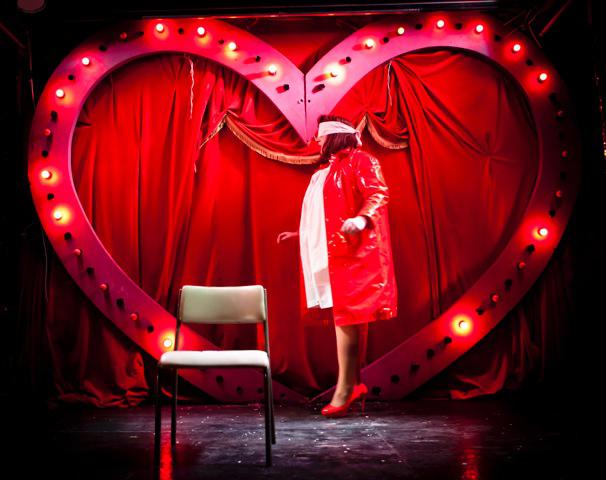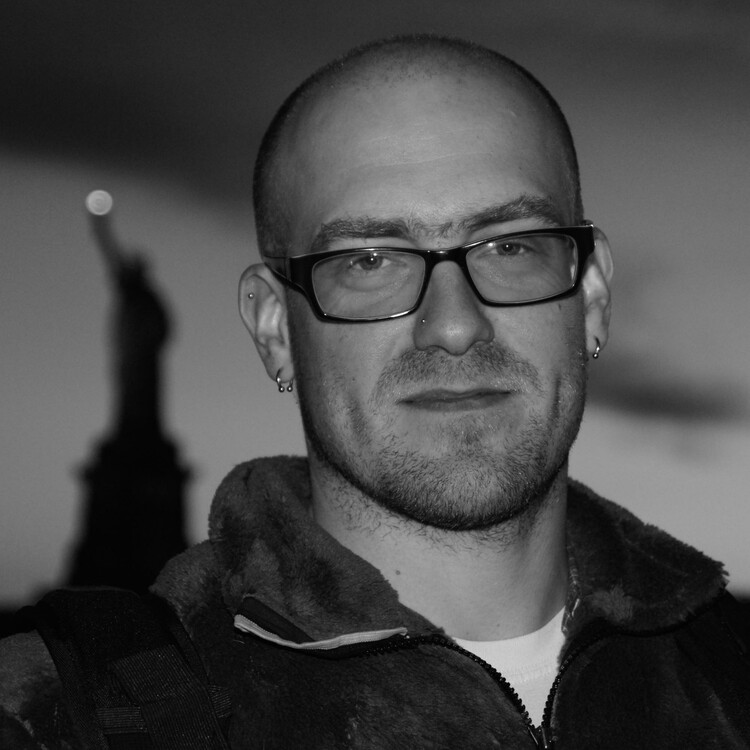Doing it Alone And In the Dark
What makes solo theatre unique? How might artists approach and create a solo play? And how might we get audiences to embrace this form? In this series on solo theatre, Scott Wesley Slavin asked six highly accomplished solo theatre practitioners to share their wisdom from working around the world on one-person shows.
I spend most of my time staring into space dreaming up ideas that people will never see. Some will never even make it to paper, let alone the stage—they are just figments of my imagination. Welcome to the world of a solo artist’s brain.
Solo performers are a bit weird. Who else would gather a group of people, turns off all the lights and ask people to laugh (in the right places)?
Over the course of an hour, we demand attention, we tell stories, and get gripes off our chest. After that hour we ask the group of people to applaud, and from that sound, we determine our value. If the sound is good, we pretend to walk out of the room and come back for more hand noise.
We then go into an even smaller room, look at ourselves in a mirror, and sit alone criticizing the way we told our stories that night. We use language like “I died,” or “I bombed” if it the show didn’t go to plan. Sometimes we’re brazen enough to blame the audience for a bad performance.
We’re a strange bunch, but it’s because we care—our work is a reflection of who we are. It exposes who we think we are, what we think, how we vote, what we believe, why we believe, and how we see the world. It isn’t a collective thought. It’s for this reason I think we give ourselves a hard time.
When you’re daydreaming up ideas and formalizing your thoughts on your next project, remember there are other people in the world who think and feel the same as you, and it’s your job to tell them they are not alone. By putting your neck, personality, and life on the line, you’ll be rewarded with gratuitous praise, hand noise, and the best job in the world—for it’s us, the artists, who are doing the social work nowadays. Whilst the world crumbles under financial strain, it’s us who show people all that’s wrong with the world.
Through the schizophrenic nature of solo performance we can often get lost, asking ourselves questions with no one responding, so here are a few tips, from the voices in my head, around navigating the murky world of solo performance:
1. Don’t think you should have all the answers. Telling the audience you haven’t quite worked it out is braver; show the shit—don’t show the solution.
2. Don’t make autobiographical work if it’s been comfortable/beige/nothing eventful has happened. Your incredibly important show about your Furby collection will be rubbish. Live a little before you ask us to pay money and/or attention.
3. Be prepared for your mental health to take a battering. You won’t get funding and that critic will give you three stars, you will feel like a rubbish human being—but it’s par for the course.
4. Don’t consider yourself brave—be honest. We live in a culture where to be honest is to be brave, which is not actually the case. Bravery should be reserved for those who are courageous; you are only telling a story, it is only a show.
5. Fail. In the failure, there is genius, and by falling flat on your face, you’ll learn the secrets to showing the world its problems.
Many of my projects explore deliberate failure. In 2013 I released a Christmas single on iTunes. My aim was to get it to number one. Of course, I knew this would never be the case, but by failing publically we learn something about the falseness and ambiguity of fame.
6. Leave your ego at the door. Egos are reserved for actors. You are not an actor; acting is embarrassing.
7. Show us your battle wounds. I don’t want to see how okay you are, it’ll teach me nothing about the human condition.
8. It doesn’t have to be about you. This is sort of the most important one. Far too often solo artists think they need to make work about themselves—you don’t.
I make work about lots of different subjects, some of which do not directly affect me. A good example of this is my project with my grandad, Real Liam Gallagher. Over the past year I’ve been equipping him with skills to help him become an artist in an attempt to fight ageism. While ageism doesn’t directly affect me, it doesn’t mean I cannot enable him to have a voice and make work.
When you’re daydreaming up ideas and formalizing your thoughts on your next project, remember there are other people in the world who think and feel the same as you, and it’s your job to tell them they are not alone. By putting your neck, personality, and life on the line, you’ll be rewarded with gratuitous praise, hand noise, and the best job in the world—for it’s us, the artists, who are doing the social work nowadays. Whilst the world crumbles under financial strain, it’s us who show people all that’s wrong with the world.
If this hasn’t put you off a career as a solo artist, then welcome to the rollercoaster of solo practice. Life can be lonely, but solo practice has the ability to tune into those aforementioned schizophrenic noises and allow us to feel together in a world dominated by insular solo activity.












Comments
The article is just the start of the conversation—we want to know what you think about this subject, too! HowlRound is a space for knowledge-sharing, and we welcome spirited, thoughtful, and on-topic dialogue. Find our full comments policy here